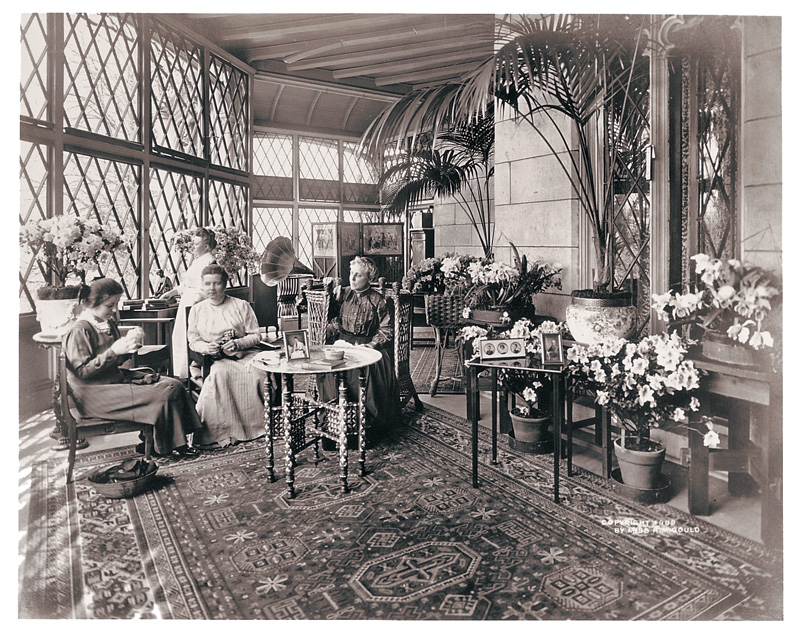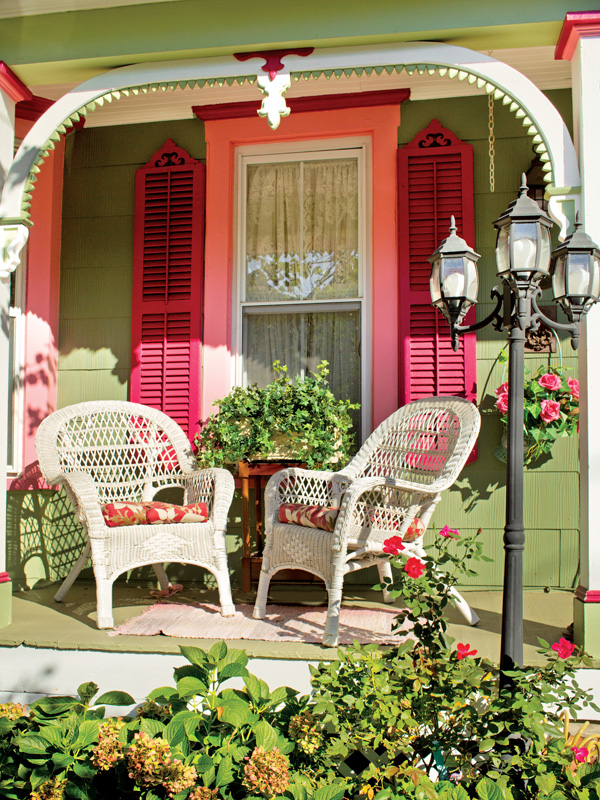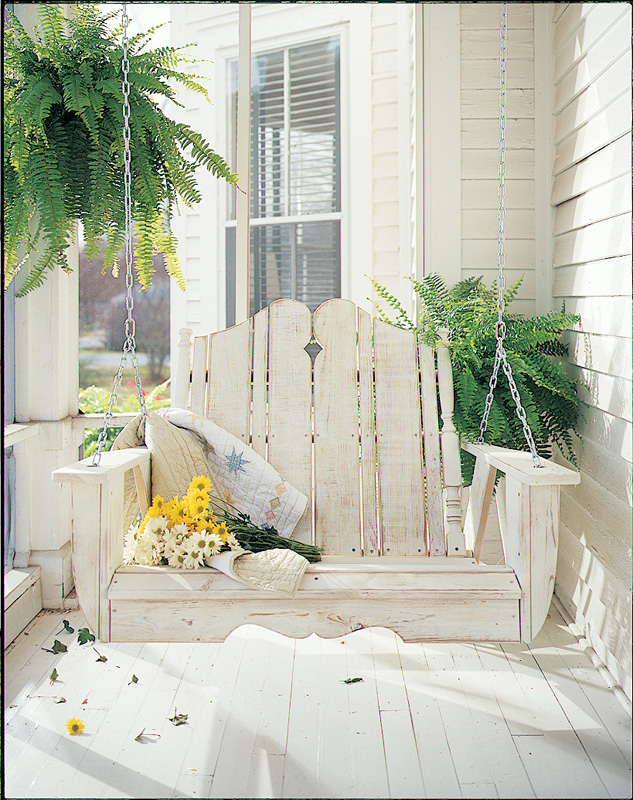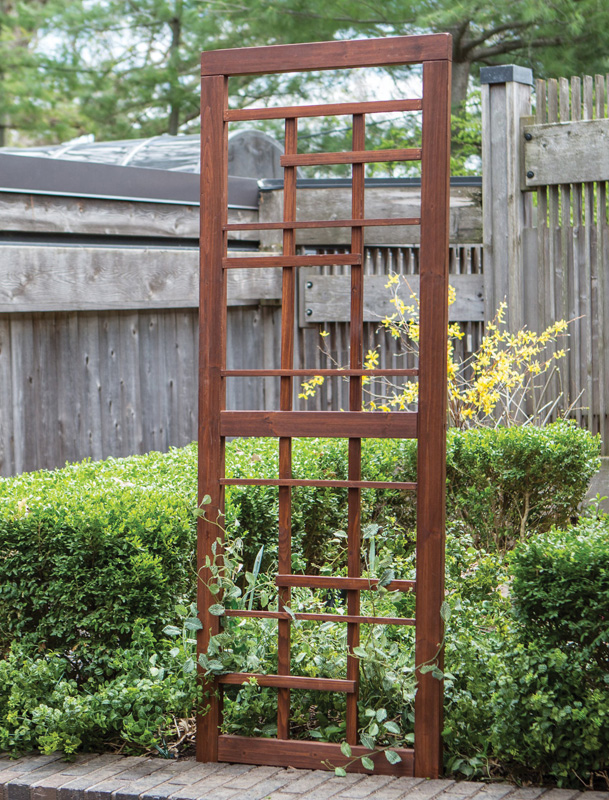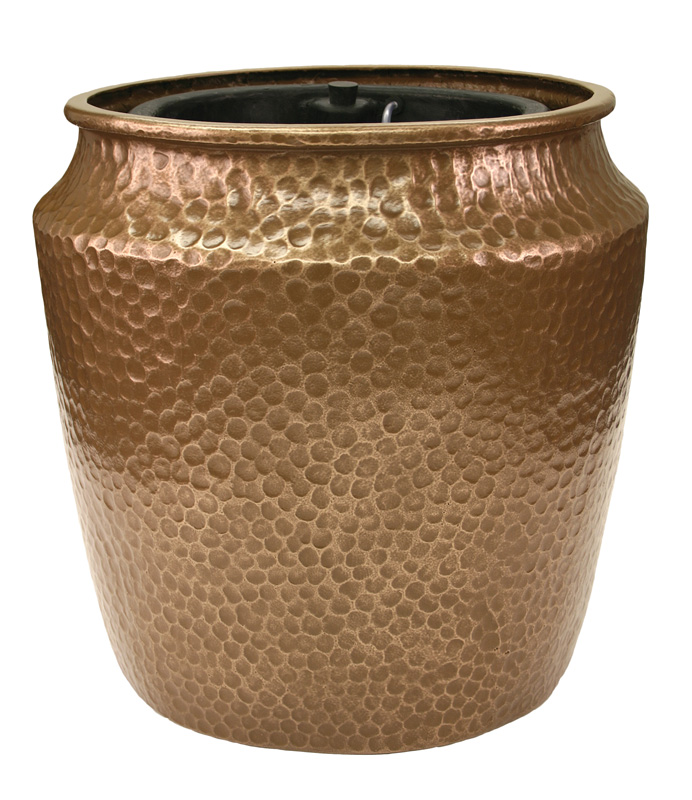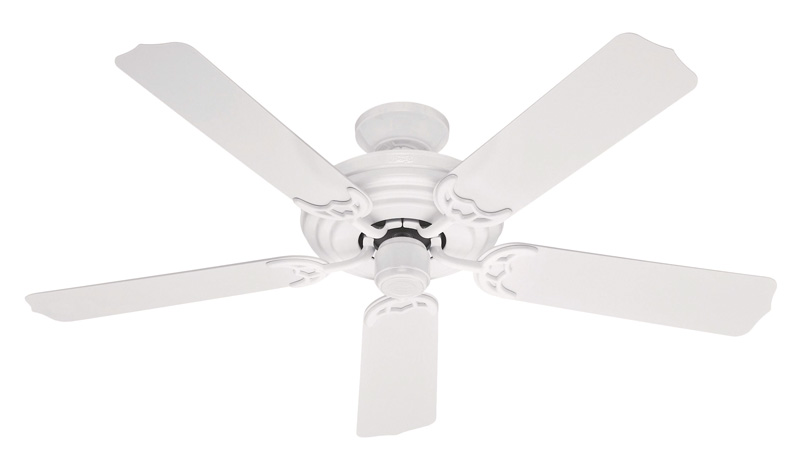Built to match eave and balustrade details on the original house, this second-floor porch was added to a San Diego bungalow. (Photo: Larny J. Mack)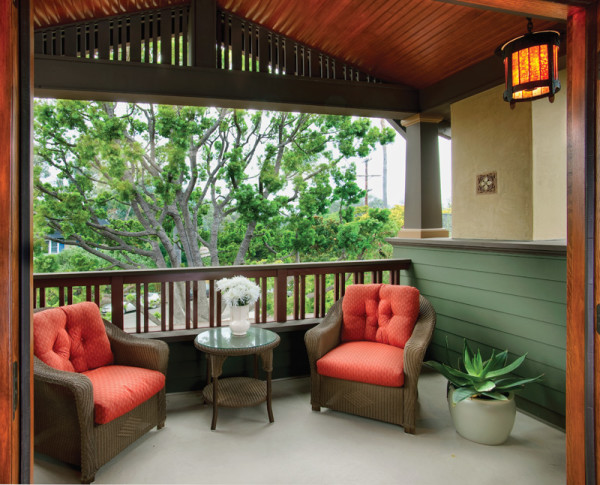
The automobile killed the front porch, says conventional wisdom. Widely spaced suburban lots, Modernism, and indoor air conditioning certainly contributed. Since the mid-20th century, screened porches and backyard patios or decks have been a center of family life, now hidden from passersby. But old-house owners and New Urbanists alike know that the porch has a rich history. The porch helps define architectural style. And it stirs memories that seem to be of another time—memories easy enough to revive.
The prevalence of porches is unique in America, particularly when it comes to houses of the Victorian era. Call it a porch, loggia, piazza, or verandah, the structure served four functions. Symbolic: As a union between architecture and landscape, the porch belongs to both house and garden. What Frederick Law Olmsted wrote in 1869 about gardens being “the exterior drawing-room of the house” certainly applies to porches. Practical: Besides offering a buffer to keep heat out of downstairs rooms in summer, and foundations dry in a storm, the nighttime porch stood in lieu of air conditioning, as a place to wait for the bedrooms to cool down. Social: The porch was a middle-class badge of honor—any house with a porch was a step up, but the size and degree of detailing telegraphed wealth and rank. Visual: Porches enlarged houses at comparatively little expense and enlivened even plain architecture.
As They Were
The porch is a “natural and delightful appendage in a country with hot summers,” wrote A.J. Downing, the landscape designer and critic who heralded the new American porch as a buffer between indoors and out. Countless archival photos, particularly from the years 1870 through 1920, show porches fully furnished with suites of wicker furniture. Captured above: A 1909 tea (on a porch fitted with conservatory glass) at Lyndhurst, the Gothic “castle” in Tarrytown, New York. Furnished down to its oriental carpet, the space is less formal and more playful than rooms inside, with touches of the exotic and potted palms.
So very many styles and choices here—floral, geometric, traditional—in weatherproof outdoor rugs, made from recycled plastic. All sizes. madmats.com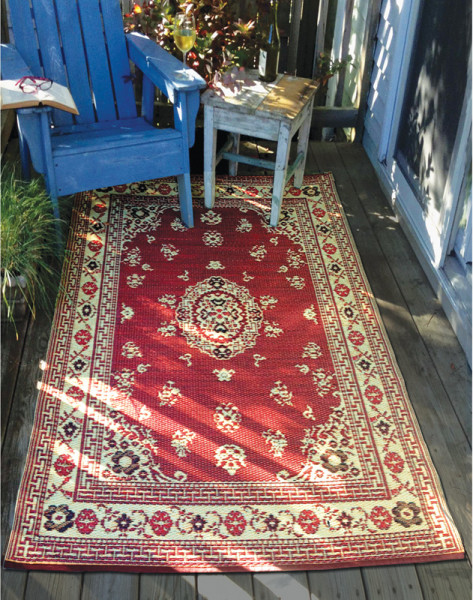
Victorian Porch
A full-blown Victorian porch is best for a house built ca. 1865–1910. A Victorian piece or two gives a nostalgic lift to plainer houses, though, whether they are earlier or later. Think in layers. Cues:
* Go for restraint—two matching rockers and a pot—or fully furnished with a conversation area, and a dining area, and a hammock or swing
* Wicker, painted wood, or fancy cast-iron furniture; exotic or rustic accents; a lacy screen door
* A pattern-rich rug in a Morris-inspired, Victorian floral, or oriental design; awnings
* Vine- or rose-covered trellis, hanging baskets
So very many styles and choices here—floral, geometric, traditional—in weatherproof outdoor rugs, made from recycled plastic. All sizes. madmats.com
The Bar Harbor style is a classic dating from the turn of the 20th century; Bar Harbor Wicker Rocker (also in white and a white wash) is part of a suite from NC Rustic. ncrustic.com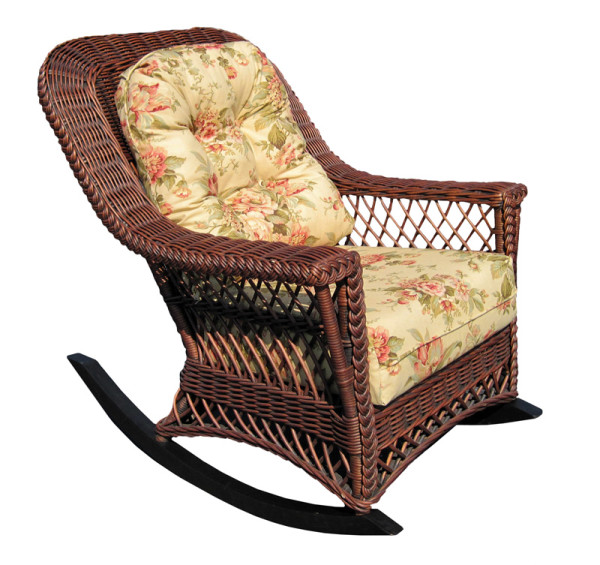
Cottage Porch
An informal approach is welcome whether yours is an old summer estate or a tiny
cottage. Mismatched furniture, even indoor cast-offs, mingle with flowers in pots or climbing the walls. Choose among neutral, pastel, and bright color schemes. Softness and texture are important. Cues:
* Bright colors (red wicker, Kelly-green shutters) or, alternately, aged and distressed finishes
* Informal arrangements; all the comforts
* White or colored wicker, regional furniture (carved root, Adirondack, coastal); mixed periods
* A hammock or porch swing with pillows
* Fiber mat, braided rug, or colorful floral rug
* Multiple pots and baskets with diverse plantings
Southern houses had incorporated porches since colonial days. The porch became a popular feature in the Northeast during the 1850s, lauded by influential architect and writer A. J. Davis—who called the porches on his Gothic Revival cottages “verandahs.” Whether an attached verandah has oriental roots or is an evolution of the classical colonnade is unclear. It’s obvious that French and Spanish settlers introduced the idea with their wraparound galeries, traceable to the West Indies. Fully integrated into the house, these long open porches allowed householders to leave the windows open even during a thunderstorm, and they shaded the house from the high summer sun.
Bungalow Porch
Porches 1905–1925 may have been transitional spaces or fully furnished rooms. A floor of tile or stone rather than wood suggests a rug or two. Flower boxes were everywhere. Cues:
* Naturalism in materials, uncluttered space
* Earthy colors, clear-finished wicker, dark green rockers, blocky wood furniture
* A slatted wood swing; Japanese-design accents; natural fiber sun shades
* Fiber mat or plain rug: single-color, bordered, two-tone pattern, quiet stripes
* Glazed pots with old-fashioned annuals
On the porch of a cottage built in 1874 in New York’s Thousand Islands—home to the same family for six generations—painted wood and wicker are a riot of color. (Photo: James Scherzi)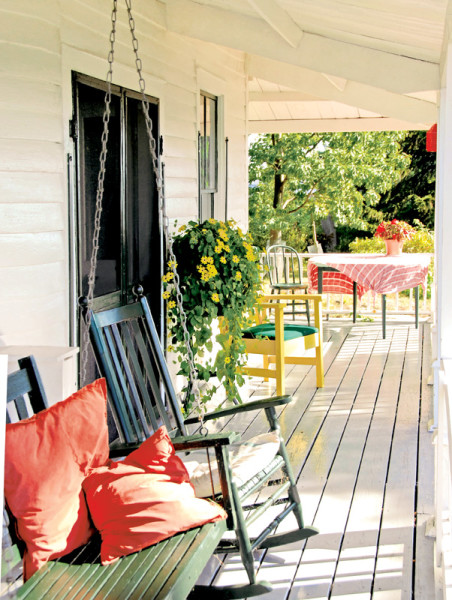
Furnishing the Porch
So if the American porch is an outdoor living room, it can be furnished and enjoyed today. Any room begins with paint. Balustrades, trim, and columns are painted to match or complement the rest of the house; round classical columns are usually some version of white. The porch flooring is traditionally a battleship grey, and the ceiling boards often sky blue.
Be sure to include modern comforts, all rated for wet locations: electrical boxes, ceiling and table lighting, an awning or roll-down porch shade (canvas or reed), perhaps a ceiling fan. A safe heat source extends the season.
Rugs define space, lending a cozy feeling. Natural fibers like hemp and sisal are traditional. Today’s outdoor rugs (made of waterproof, nonfading polypropylene) come in every style, from plain woven mats and braided rugs to sisal and oriental-carpet lookalikes.
Furniture, the main attraction to ensure porch-sitting, also conveys period style. The most traditional types are wicker, cast iron, bentwood, and wood and canvas. The high-back porch rocker is a classic. Porch swings appear in most periods; they were called gliders, which now refers to a seat that rocks or pivots. Think of furnishing the porch as you would a room inside, but with fewer rules and less formality. Wicker comes in various styles to this day; the fussier early pieces include twists and curlicues, while turn-of-the-century types, like the so-called Bar Harbor style, is more rectilinear and woven in a lattice pattern. Craftsman porches are easy to furnish with plain wicker and sturdy oak, all in a limited palette. Always be sure to include side tables. Some porches are big enough for a dining area.
Plants and flowers are the equivalent of pictures and collectibles. Use them to define an edge, mask a corner, and add color. Window boxes (at a window sill or hung from the porch rail or apron) are ubiquitous in old photographs. Pots sit on stairs and the deck. Victorian porches had potted ferns on plant stands and wicker planters on legs. Hung with ivy, climbing roses, or morning glories, trellises decorate the wall or provide privacy from the neighbor next door. Indoor houseplants are happy to summer on the porch.



